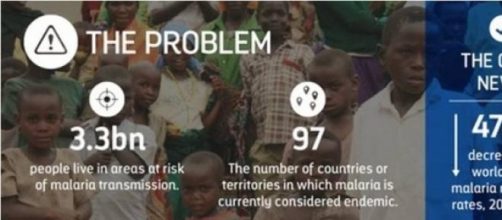It's April 25 and yet again we can't take our eyes off a regretful fact that a preventable and treatable disease is a major culprit of divested lives of billions and so a continent. It has almost been a century after the first clinical treatment of Malaria and still half of the world continues to live under its threat. Despite the existence of simple and cost-effective measures like insecticide treated nets to ACT & SMC therapies, it kills one child every minute in Africa.
The UN initiative
The World Malaria Day was instituted in 2007 and now 2015 marks the last World Malaria Day under the United Nations Millennium Development Goals.
To commemorate the occasion, Work the World has released a new infographic highlighting the successes of anti-malaria efforts worldwide. However, it also shows the vital need for sustained efforts to build upon those successes and end the menace of malaria.
Malaria Statistics
Eradicating Malaria has been a real challenge for UN and African Governments. 35 countries continue to account for 98% of malaria deaths and 30 of these are in Africa. Countries like Nigeria, Democratic Republic of Congo, Uganda, Mozambique, Tanzania and Côte D'Ivoire account for 47% of the world's total malaria deaths. In Africa, malaria causes approximately 20% of cerebral conditions leading to death.
Malaria leading illiteracy - Malaria is the prime cause of absenteeism in school.
In many cases a student has to stay back at home as caretaker if a family member is suffering from Malaria. Statistics show that each year, 10 million missed days are recorded in Africa alone. The infection at early could also damage the learning capabilities of students.
African Economy - Millions of adults suffer malaria each year, keeping them out of work. The cost of hospitalisation and medication takes a considerable amount of disposable income of the family. Every year the African economy suffers a $10-$12 billion loss, even though a small portion of this amount is sufficient to eradicate the cause.
The light at the end of the tunnel
The UN has taken immense strides in keeping the world safe from malaria, with a 47% decrease in worldwide malaria mortality rates between the years 2000 and 2013 - equivalent to 4.3 million lives saved. New government funded initiative programs like free checkups, ACT and SMC treatments, and wide distribution of bednetshave helped 'alleviate' the condition in recent years.

